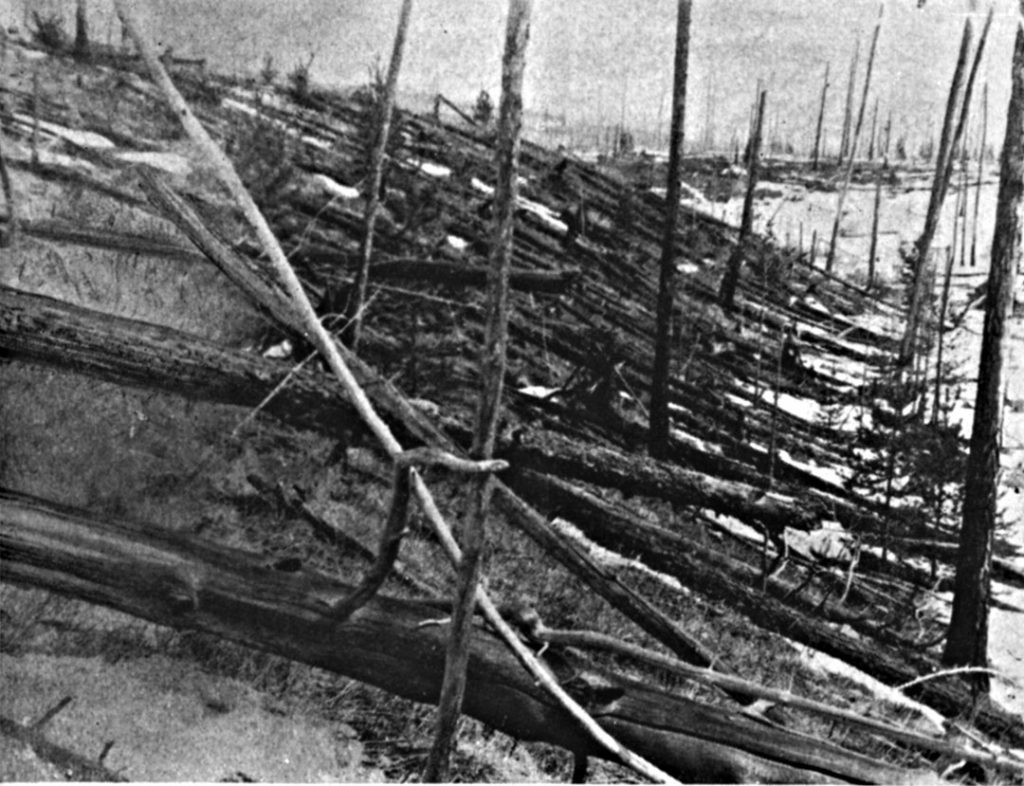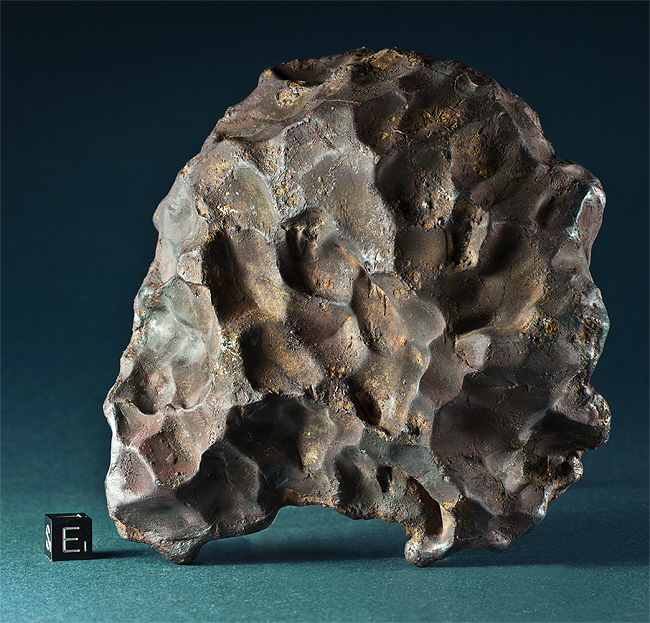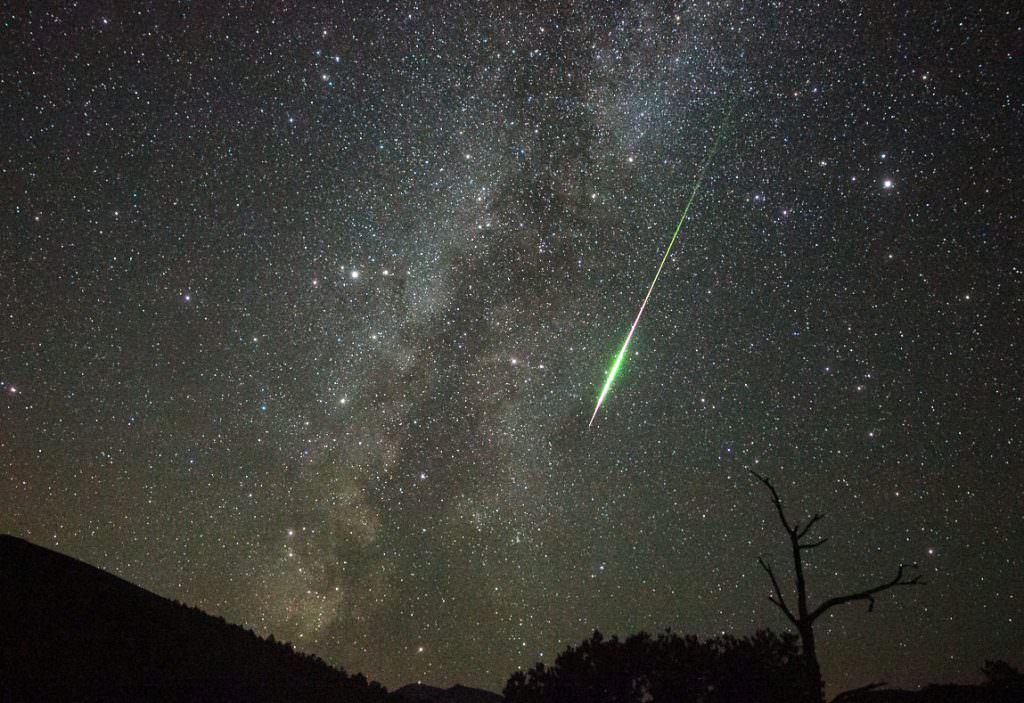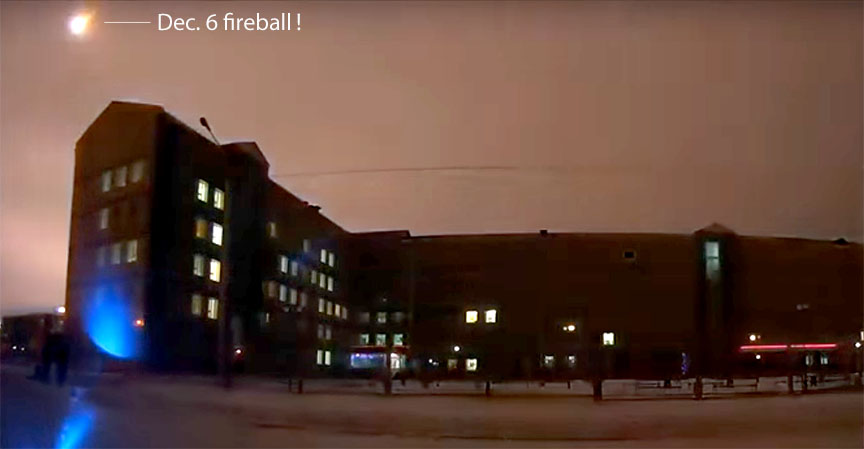Children ice skating in Khakassia, Russia react to the fall of a bright fireball two nights ago on Dec.6
In 1908 it was Tunguska event, a meteorite exploded in mid-air, flattening 770 square miles of forest. 39 years later in 1947, 70 tons of iron meteorites pummeled the Sikhote-Alin Mountains, leaving more than 30 craters. Then a day before Valentine’s Day in 2013, hundreds of dashcams recorded the fiery and explosive entry of the Chelyabinsk meteoroid, which created a shock wave strong enough to blow out thousands of glass windows and litter the snowy fields and lakes with countless fusion-crusted space rocks.
Documentary footage from 1947 of the Sikhote-Alin fall and how a team of scientists trekked into the wilderness to find the craters and meteorite fragments
Now on Dec. 6, another fireball blazed across Siberian skies, briefly illuminated the land like a sunny day before breaking apart with a boom over the town of Sayanogorsk. Given its brilliance and the explosions heard, there’s a fair chance that meteorites may have landed on the ground. Hopefully, a team will attempt a search soon. As long as it doesn’t snow too soon after a fall, black stones and the holes they make in snow are relatively easy to spot.

OK, maybe Siberia doesn’t get ALL the cool fireballs and meteorites, but it’s done well in the past century or so. Given the dimensions of the region — it covers 10% of the Earth’s surface and 57% of Russia — I suppose it’s inevitable that over so vast an area, regular fireball sightings and occasional monster meteorite falls would be the norm. For comparison, the United States covers only 1.9% of the Earth. So there’s at least a partial answer. Siberia’s just big.

Every day about 100 tons of meteoroids, which are fragments of dust and gravel from comets and asteroids, enter the Earth’s atmosphere. Much of it gets singed into fine dust, but the tougher stuff — mostly rocky, asteroid material — occasionally makes it to the ground as meteorites. Every day then our planet gains about a blue whale’s weight in cosmic debris. We’re practically swimming in the stuff!

Most of this mass is in the form of dust but a study done in 1996 and published in the Monthly Notices of the Royal Astronomical Society further broke down that number. In the 10 gram (weight of a paperclip or stick of gum) to 1 kilogram (2.2 lbs) size range, 6,400 to 16,000 lbs. (2900-7300 kilograms) of meteorites strike the Earth each year. Yet because the Earth is so vast and largely uninhabited, appearances to the contrary, only about 10 are witnessed falls later recovered by enterprising hunters.
A couple more videos of the Dec. 6, 2016 fireball over Khakassia and Sayanogorsk, Russia
Meteorites fall in a pattern from smallest first to biggest last to form what astronomers call a strewnfield, an elongated stretch of ground several miles long shaped something like an almond. If you can identify the meteor’s ground track, the land over which it streaked, that’s where to start your search for potential meteorites.
Meteorites indeed fall everywhere and have for as long as Earth’s been rolling around the sun. So why couldn’t just one fall in my neighborhood or on the way to work? Maybe if I moved to Siberia …


WAY cool videos.. I hope they find some chunks before they get buried in the snow. NiFe? Hmm, “..explosions heard..” THAT’s a good sign… at least it got down low enough to do that!
Next time you clean your gutters, run a decent magnate through the debris. You’ll find metallic micro meteorites. They are literally THAT common.
Yes! When I first heard I could get a magnet and find meteor dust in my gutters I got out my nail picker upper ‘magnet on a stick’ and went thru our gutters with it. I was surprised when I got enough metallic meteor dust to fill up an old 35mm film canister! I gave that to the wife to take up to her school to show the kids. They REALLY got a kick out of that!
Yeah… this was a week or so after the transit of Venus where I took my sunspot scope up to the school (after classes) and showed those interested. That went pretty dang good too! I wonder how many of the kids will remember this later in life? Future astronomers?
Siberia 10% and USA 1,9% is not correct. The former is not that much bigger. c.13 vs 9 million km2.